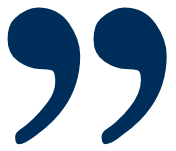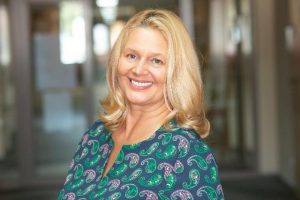I have been researching the early education of children in Kenya for many years. When I travel to this beautiful African country, I make friends with students and teachers. To help them organise classes, I provide them with school supplies, hardware and bikes. I am also involved in the project of building a new school on Wasini island – a school under the baobab tree. I believe that access to knowledge will give an opportunity for a better life at least to some of the students.
A makeshift building made of sheet metal, with schoolchildren in red uniforms sitting on a threshing floor, or working at swaying wooden benches – such was the image that Dr. Anna Watoła saw when she visited Kenya for the first time in 2012. Being interested in what education in different countries looks like, she asked the driver to take her to the nearest village Amboseli, where she took part in a lesson in the Maasai school. The conversation with teacher Simon Kama not only inspired her to undertake research on initial education of Kenyan children, but also gave way to many campaigns, thanks to which she has provided students of Kenyan schools and universities with school supplies, laptops and bikes. ‘Everyone of us can help’, says the educationalist from the University of Silesia.
Teachers come to Maasai schools for two or three months in a year. Most frequently, these are students who did not get a job in other places, which they consider to be better. ‘I’m under impression that they’d rather be somewhere else. They volunteer, travelling between the villages and teaching a bit here, a bit there, treating their activities as educational mission. Their remuneration is usually a hen or a meal, and rarely money, though they have to earn something to be able to continue their studies’ says Dr. Anna Watoła. And the students? They take down notes with a pencil very lightly, so they can erase them after a while and write further information in the copybook. ‘I found the education of Maasai children intriguing. This is how my friendship with the amazing place in Africa started’, she adds.
Kenya is a diverse country. On the one hand, there are two main urban centres that function very well – Nairobi, one of the most developed capitals in Africa and Mombasa, which is the second biggest city. There is luxury infrastructure, airports, hotels, clubs, diving and kitesurfing schools, as well as fine primary, secondary and higher education. But Kenya is also houses made of clay, cow excrement or wood – or rather sticks (there is very little wood) in the African bush, and Maasai tribes living in very poor conditions, facing the lack of access to drinking water.
There are huge distances between cities and villages. Most often, only children from wealthier families have access to systematically transferred knowledge. Although education is free of charge, you need money to buy school supplies or mandatory uniforms. The youngest children in poor large families living in villages far away from cities either don’t go to school at all, or attend it only when they find time between their other daily duties, provided that the teacher is present at the moment.
‘Despite their difficult living conditions, Maasai are cheerful and full of joy. They have a great sense of aesthetics, their outfits and dances are outstanding. They make beautiful jewellery. I really like their intertribal relations. They support one another in their shared poverty and wouldn’t last without such strong bonds. I have a lot of affection and respect for them and I try to help them wisely’, says the educationalist.
The idea of providing the school in Amboseli with a laptop that would help working with children was born during the first meeting with teacher Simon Kama. ‘The idea seemed great to me, but it quickly turned out that IT equipment was not enough. We needed the whole infrastructure, which is why we installed solar panels soon afterwards. Under the strict guidance of my husband Janusz, together with my daughter Marta, I first learnt to install them, then struggled to get them transported to Kenya and we finally assembled the panels on site, to the joy of the students and teacher’, tells us Dr. Anna Watoła. However, the problem was that they did not really know how to use the equipment. This is how a special education experiment started. Together with the IT equipment, the educationalist also decided to develop and provide education software and apps in English (and ultimately in Swahili as well). They will help teaching classes, accelerate transfer of knowledge and be adjusted to the needs of children at every age and different levels of education.
Kenyan schools located far away from the major urban centres operate on special terms. Maasai is a nomadic people. When they stop in a specific area for a longer time, they send their children to school there, as long as their daily duties allow them to do it. As a result, there are usually children at different age and with various amount of knowledge in a single class. For example, the school on Wasini island which Dr. Anna Watoła regularly visits is one-class. The children learn to write and read. The teacher comes when she has time: if she does the washing or cooking on a particular day, then she stays at home. The children come to school every day, usually play around the building and wait for the teacher who may or may not come. Once she arrives, she decides which children are invited to the classes. She works for a while with the first group, then with another, etc. ‘Watching this process, I decided to take specific action. Material support in the form of school supplies and IT equipment, or development of educational programmes is not enough. I decided to help them build a new bigger school where all children could study at the same time. How much courage or madness it takes, I don’t really know…’, says the educationalist.
The deed of gift of the land for the construction of the school has already been signed in Mombasa, and the initiative was called “School under the Baobab Tree” due to the beautiful long-lived deciduous trees which grow there. The design is ready and the building material will be supplied by the island inhabitants who undertook to cut stone bricks free of charge. ‘In the future, our students could travel there to help the education process of Kenyan children and, by the way, probably have the adventure of a lifetime’, admits the scientist.
Dr. Anna Watoła has also established cooperation with representatives of Kenyan universities. This is not only about the exchange of educational experiences, but also the involvement of students and lecturers in creating together the education of African children, in particular Maasai. Students get IT equipment and software, sometimes also a bike, so that they can move between the villages, and in return, they undertake to teach classes at schools – on Wasini island or in Amboseli. Kenyan lecturers also get involved.
Currently, the project partners include: Pwani University in Kilifi, Kenyatta University in Nairobi, Technical University of Mombasa and Koitaleel Samoei University College of Nairobi. The cooperation allows for exchange of students and doctoral students, guest lectures, participation in educational projects, as well as research conduct, organisation of scientific internships and teaching practices.
While taking care of the education of Maasai children, we cannot forget about the value of their own unique culture. Nobody wants them to forget about the place that they came from, or stop using their own specific variety of Swahili. What we do want is rather to create conditions for their development and better life. Had it not been for the continuous interference of Europeans, Americans or Kenyan government, the tribes would probably go on living as they did for centuries. Unfortunately, the state, which keeps changing without their involvement, forces to take action which is an opportunity for them. ‘There are many examples, and here’s one of them: why is it European travel agencies that get rich from the tourist traffic? Such services might as well be provided by the native people, but they would need to have knowledge and speak English. Who could be a better guide in Kenya than a Kenyan person’, asks the scientist rhetorically.
The latest two-month trip of Dr. Anna Watoła, which ended in September 2019, was an opportunity for her to visit the school in Bombolulu, a suburb of Mombasa. During the class inspections, the educationalist collected information about the early education of Maasai children. ‘We have the tools that allow us to analyse the children’s readiness for school, growth of knowledge and skills. By comparing the results with educational programmes and the system itself, we are able to offer proper educational tools to support this process. At the same time, on the one hand we get to know the frequently difficult stories of these children, on the other hand – their unique, fascinating culture’, says the scientist.
Małgorzata Kłoskowicz | Press Section
How can you help?
If anyone wants to donate new or used IT equipment, bike or school supplies for Maasai teachers and students in Kenya, please contact Dr. Anna Watoła – anna.watola@us.edu.pl.







